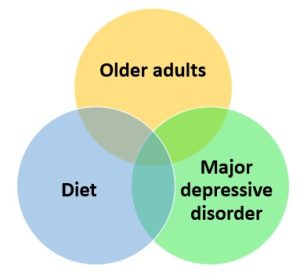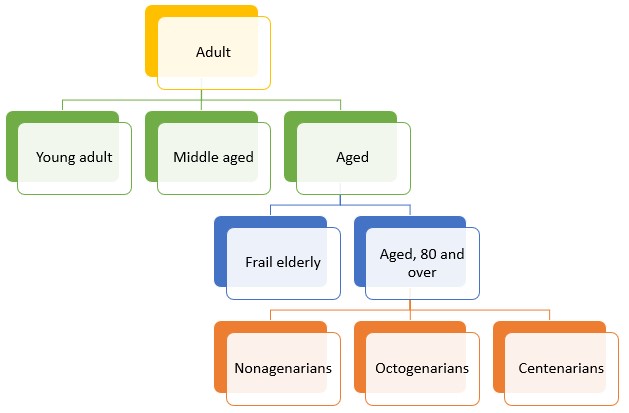Developing the initial search
Learning Objectives
This sub-chapter will help you:
- identify the search concepts from the research question.
- identify seed articles.
- develop the keywords and subject headings.
- formulate a search strategy.
“The first step in conducting a literature search should be to develop a search strategy. The search strategy should define how relevant literature will be identified.” (Atkinson & Cipriani, 2018, p. 75).
The initial or preliminary search is where you develop your search strategy. This is a lengthy process, and your search will be refined and improved as you go. Resist the temptation to rush this stage, as the quality of your final search strategy will influence the quality and reliability of your review. You will decide on which concepts to search for, identify keywords and subject headings, and the various operators required. Record and make edits in your search documentation.
Search concepts
The review question guides your search. You will use the main concepts to develop a set of terms you combine to create a search strategy. Bramer et al. (2018) recommend considering how important each concept from your question is, and how specific it is. Keeping the number of concepts as low as possible means there is more chance of finding all the relevant articles because the search will be broader. Sometimes including a concept could lead to bias in the results, such as including an outcome. Some concepts could overlap, for example, if a particular disease is only found in a particular population, there is no need to include the population in the search.
For example, in this question:
Can a healthy diet improve symptoms of depression in older adults with major depressive disorder?
The PICO elements used to develop the question could have been:

The search concepts might be:

Including the full concepts of ‘healthy diet’, or ‘improve symptoms’ could lead to bias as this would exclude articles about an unhealthy diet leading to improving symptoms, or symptoms worsening because of a healthy diet! This shows how a framework does not always correspond to the search concepts.
Activity 4
Seed papers
It is useful to have a set of seed papers, or key papers you know are relevant to your review question and would expect to see in your results. These may include articles identified in reviews on a similar topic to yours or ones you already know of or had recommended to you. They need to match your inclusion and exclusion criteria.
Seed papers help you identify relevant terms by looking in the titles and abstracts to see what terms the authors used, and to test your search strategy to see if they are included in the results.
Some useful online tools can help identify seed papers. You may need to create an account, but they are free to use. If you use one of these tools, it is good practice to explain what you did in the methods of your review and cite the tool you used.

- Elicit uses semantic language models to help find articles that match a research question.
- Research Rabbit allows you to see connections between authors and articles. Results are displayed as a list or a visualisation.
- MeSH on Demand: This is a tool from the NIH which uses machine learning to identify MeSH terms from the abstract of an article or a research question. It shows the top ten articles from PubMed that match your question.
Subject headings
A subject heading is a standardised term that publishers or databases apply to article records, regardless of what word the authors use. They are also known as thesaurus terms, descriptors, topic headings, controlled vocabulary, and index headings. For example, even if an author writes about ‘decubitis ulcers’ in an article, the subject heading ‘pressure ulcers’ will be assigned.
In your search strategy, include subject headings for each concept. You can only use existing subject headings, you can’t make up new ones to search for! However, some concepts will not have subject headings.
Subject headings are different in each database, so you will need to find them in each database you search.
- MeSH: used in MEDLINE, PubMed, and Cochrane
- APA Thesaurus: used in PsycInfo
- Emtree: used in Emcare and Embase
- CINAHL Subject Headings: used in CINAHL
- No subject headings: Web of Science and Scopus
Use the scope notes to see what the database means by each subject heading to make sure it matches the concept you are searching for. Subject headings are arranged in a ‘tree’ structure, illustrated below, where broader terms branch down into narrower, more specific terms.
When choosing subject headings, use the most specific one that describes your concept. Databases allow you to explode subject headings when there are narrower headings underneath. This will find records with the subject heading as well as the more specific ones underneath. This is useful for reviews, as you need to find anything potentially relevant.

Add the subject headings to your search documentation, making sure to use the correct field codes for the database you develop your search in. In CINAHL on EBSCOhost, the MH indicates it is to be searched for in the subject heading field, and the + indicates the term has been exploded to include all the narrower terms beneath, for example:
(MH “Aged+”)
The following short video from EBSCOhost demonstrates how to use subject headings in a search.
EBSCO Tutorials. (2025, April 17). Using the CINAHL/MeSH headings feature in the new EBSCOHost user interface [Video]. YouTube. https://www.youtube.com/watch?v=_0OPVlUelZU
Activity 5
Helpful tools
Several online tools can assist you in finding MeSH terms.
- PubReMiner: This tool text mines PubMed to highlight prominent authors and papers, and frequently occurring MeSH terms and keywords in the results that may be added to your search. You can search using a search strategy, or enter the PubMed IDs of existing seed papers you have.
- Yale MeSH Analyzer: This tool allows you to search for the PubMed IDs of your seed papers, and displays in a table the article information, such as the abstract, as well as the MeSH terms and author keywords assigned to each article. It is an easy way to see all the MeSH terms at once. The video on the Yale MeSH Analyzer help page shows how to use it.
Keywords
You need to develop a set of keywords to search for in the text of the article. Each concept needs keywords, even if there is no subject heading for that term.
You will need to consider:
- professional terms: decubitis ulcers/pressure ulcers
- generic or specific terms: aspirin/acetylsalicylic acid
- acronyms or common abbreviations: ASD/autism spectrum disorder
- regional differences: primary school/elementary school, labor/labour
- changes over time: domestic abuse/intimate partner violence
You can identify keywords through your knowledge of the topic, and through looking at the titles and abstracts of relevant articles. You can also use subject headings to identify keywords. Each concept should have the subject heading turned into a keyword, including any narrower headings included by exploding. Check the entry terms for each subject heading to include these as keywords too.
Continue recording keywords in your search documentation.
(MH “Students, College”) OR college student OR university student
The following video by Welch Medical Library shows how to use subject headings to find keywords in PubMed.
Welch Medical Library. (2020, July 1). PubMed: Identifying search terms [Video]. YouTube. https://youtu.be/xR_pWVoVM-M
Helpful tools
Several online tools can help in finding additional keywords.
- PubReMiner: As well as finding MeSH terms, this will also use text mining to show the most common words and terms in the abstracts of the articles.
- WordFreq: From Bond University in the Evidence Review Accelerator suite of tools, this also uses text mining to show the most common words in titles and abstracts.
Combining terms and search operators
You need to combine and refine keywords and subject headings to retrieve everything potentially available on your topic. This is done using several techniques, many of which are identical no matter which database you search, but some will need to be translated for different databases. You may be familiar with some of these techniques already, but others may be new to you.
Further reading
Aromataris, E., & Dagmara, R. (2014). Systematic reviews: Constructing a search strategy and searching for evidence. American Journal of Nursing, 114(5), 49-56. https://doi.org/10.1097/01.naj.0000446779.99522.f6
References
Atkinson, L., & Cipriani, A. (2018). How to carry out a literature search for a systematic review: A practical guide. BJPsych Advances, 24(2), 74-82. https://doi.org/10.1192/bja.2017.3
Bramer, W. M., de Jonge, G. B., Rethlefsen, M. L., Mast, F., & Kleijnen, J. (2018). A systematic approach to searching: An efficient and complete method to develop literature searches. Journal of the Medical Library Association, 106(4), 531–541. https://doi.org/10.5195/jmla.2018.283
Higgins, J. P. T., Thomas, J., Chandler, J., Cumpston, M., Li, T., Page, M. J., & Welch, V. A. (Eds.). (February, 2022). Cochrane handbook for systematic reviews of interventions (Version 6.3). Cochrane. www.training.cochrane.org/handbook.
A word or phrase that describes all material in a database on that subject.
A character or string of characters used in a database to narrow the focus of the search.
A systematic error or deviation from the truth in results.
The result of a study’s intervention.
A structure to organise the components of a balanced and focused research question.
Qualifications and disqualifications for retrieved results.
A brief summary of a study and its results.
A systematically organised collection of information, such as journal articles.
In subject headings, a terms definition or explanation of the term’s correct usage.
A set of characters in a database that describes a particular kind of data, such as a title or abstract.
Synonyms that link to subject headings.

